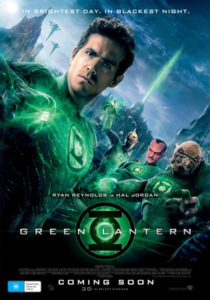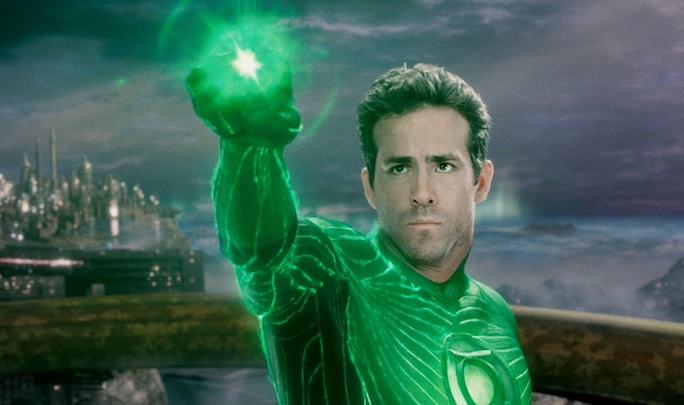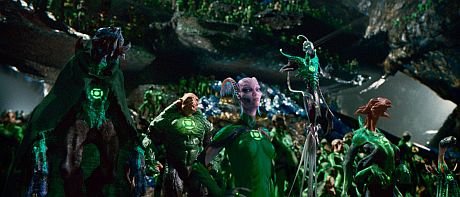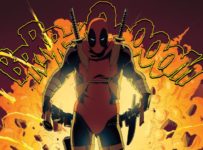 In the pantheon of characters in the DC Comics universe, only Superman and Batman have made any impact with the mainstream filmgoer. While Marvel Studios have been building a film universe, and making household names out of Thor, Iron Man and Captain America, DC’s four-colour heroes have failed to materialise in any significant way on the silver screen. Green Lantern has been a character in DC Comics since 1940s, but was re-imagined as an interstellar space cop in the 1950s to suit the changing tastes of the modern age. The comics lore has seen five different humans wear the power ring of the Green Lantern Corps, but one incarnation has remained both a fan-favourite and an iconic figure of the spandex scene: Hal Jordan.
In the pantheon of characters in the DC Comics universe, only Superman and Batman have made any impact with the mainstream filmgoer. While Marvel Studios have been building a film universe, and making household names out of Thor, Iron Man and Captain America, DC’s four-colour heroes have failed to materialise in any significant way on the silver screen. Green Lantern has been a character in DC Comics since 1940s, but was re-imagined as an interstellar space cop in the 1950s to suit the changing tastes of the modern age. The comics lore has seen five different humans wear the power ring of the Green Lantern Corps, but one incarnation has remained both a fan-favourite and an iconic figure of the spandex scene: Hal Jordan.
When test pilot Hal Jordan (Ryan Reynolds, The Proposal), haunted by the death of his pilot father, pushes his daredevil ways too far, his antics result in the destruction of several fighter jets and the loss of a major contract for the Ferris Aircraft Company. Reviled by his soon-to-be-retrenched co-workers, and disappointing his former flame Carol Ferris (Blake Lively, Gossip Girl), Jordan’s life takes a rapid turn when an alien spacecraft crash-lands and its pilot bestows upon him the power ring of a Green Lantern, imbuing him with the green-tinged power of will and membership to the intergalactic group of space cops known as the Green Lantern Corps.
Unlike the more recognisable characters in the DCU, there’s no familiarity being traded on Green Lantern. Starting with Lantern’s origin story is a risky prospect for mainstream audiences, as the will-powered rings are a little more fantastical than an orphaned billionaire taking back the night dressed as a bat. At least they didn’t bring up the whole weakness to yellow thing. Accepting this prospect brings with it the ability to go with the infected Hector Hammond (Peter Sarsgaard, In The Electric Mist), who sports a giant head and telekinetic abilities throughout much of the film. However, no amount of logic flexibility is enough to accept Blake Lively as a fighter-pilot-turned-business-mogul, or as a credible actress. Easily the weakest link in the film, the very thread that ties Jordan to his human side is used as little more than window dressing in this debut outing and an odd choice for the feisty Ferris, a mainstay of the comics who develops a very powerful storyline of her own in the later continuity.
Yet the issue with this film was never going to be the conceit of a will-infused superhero, led by the guidance of the Guradians: small blue immortals from the planet Oa. Indeed, if one can’t accept the super powers on face value, then it is best to check out early. Rather, Martin Campbell’s (Casino Royale) direction lurches from moment to moment, never sure whether he is shooting for a comedy, a drama or a special effects extravaganza. The truth lies a little between all three, and the fit isn’t always a comfortable one. Campbell has certainly done better, but the fault isn’t his in this case. Rather, the too-many-cooks screenplay, by Greg Berlanti, Michael Green, Marc Guggenheim and Michael Goldenberg (all television writers except Goldenberg, who scripted Harry Potter and the Order of the Phoenix), never finds an anchor point, and fills itself with the kitchen-sink approach to action, hoping one of the plot elements will take hold. Past connections between Hammond, Jordan and Ferris are acknowledged but never explored, characters (especially on Oa) are merely introduced for future installments at best or merchandising at worst, and seasoned actors Tim Robbins and Geoffrey Rush are criminally underused. A Parallax story should have been enough, but it was as if one of the writing team panicked and pasted in the Hammond story-line at the last minute, only to remember they had to tie up the whole end-of-the-world thing at some stage.
There is still much to like in Green Lantern, despite its many flaws. There’s an anarchic sense of fun, and while this does result in a messy denouement, it is a welcome change from the far-too-serious approach that some comic book adaptations have been taking of late. Reynolds is a likeable enough Jordan, and while his character is a bit of a dick at times, there is little questioning his charisma as a leading man. The effects bringing Parallax to life are actually quite spectacular, although the potential combinations of the willpower-generated constructions are never fully utlised. Prior to his transformation, Sarsgaard is also proficient at the already slightly-unhinged Hammond, and it is simply a shame that he doesn’t have enough to do during his brief moments on screen. For fans, the Planet Oa is almost fully realised, and it is nice to finally see some of that Lantern lore and expanded universe shine, with Michael Clark Duncan’s CG-enhanced Kilowog almost worth the price of admission.
Green Lantern establishes a solid foundation for future stories, without excelling enough to take the film to the next level. As this review goes online, a sequel is still being planned, with the words “darker and edgier” being bandied about with alarming regularity. The obligatory post-credits clip hints at where the storyline will head to if they take this path, and fans of the comic will know exactly which character Jordan is destined to fight. Yet darker and edgier is not what this franchise needs. One need look no further than the Bruce Timm (Batman: The Animated Series) produced animated films Green Lantern: First Flight and Green Lantern: Emerald Knights to completely capture the tone needed to sell the space cop in the future.
[stextbox id=”custom” caption=”The Reel Bits”]Green Lantern is certainly not the train wreck that is has been unfairly labelled, but it lurches around for a bit before finding its feet. There are all the elements needed for a solid series here, and we are still optimistic for the future of the franchise – but we are running out of patience, DC. [/stextbox]
Green Lantern is released in Australia on 11 August 2011 from Roadshow Films.





